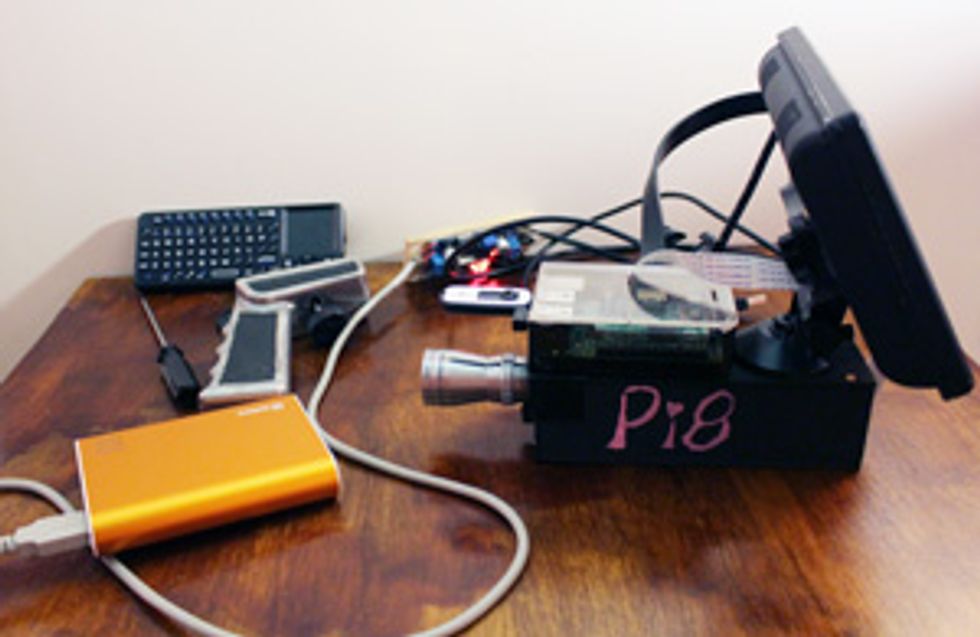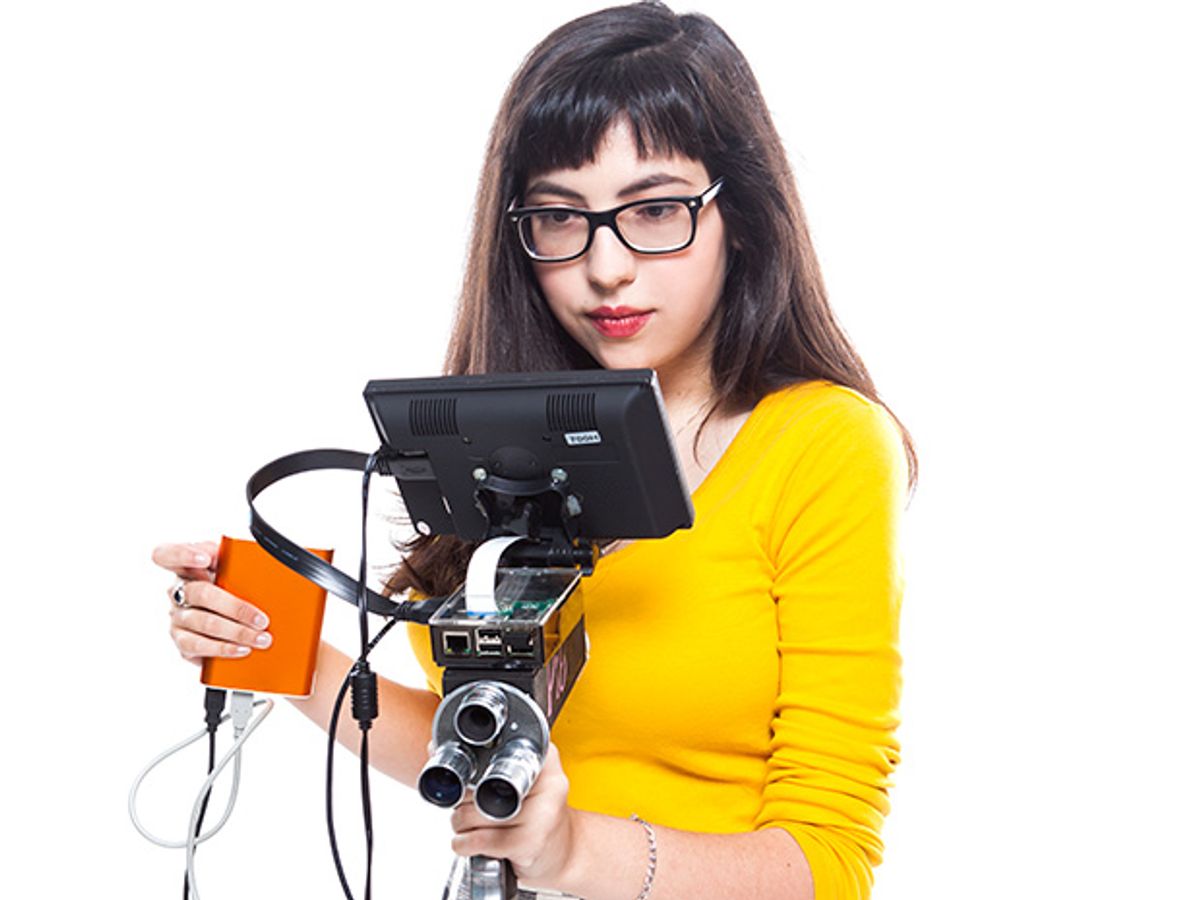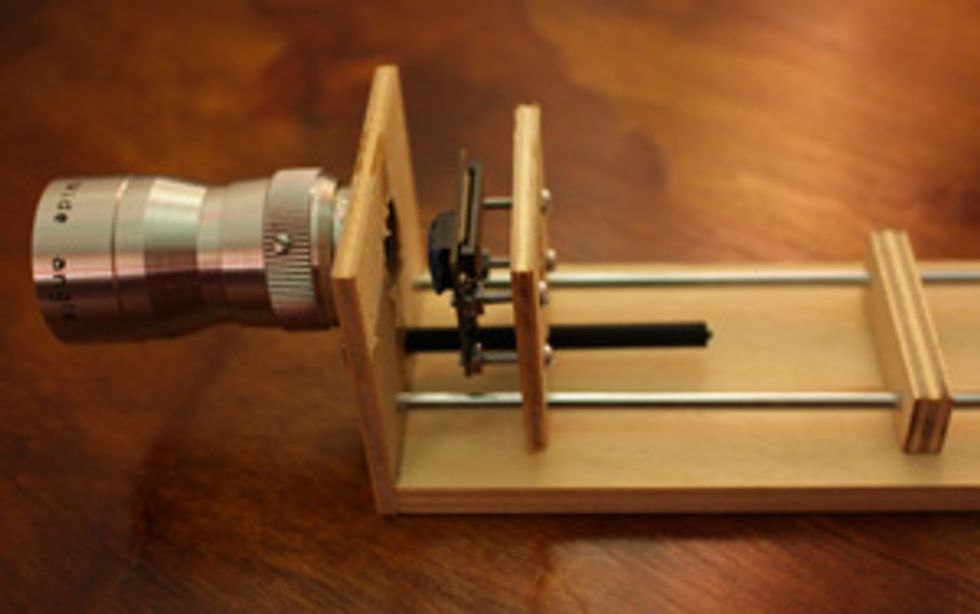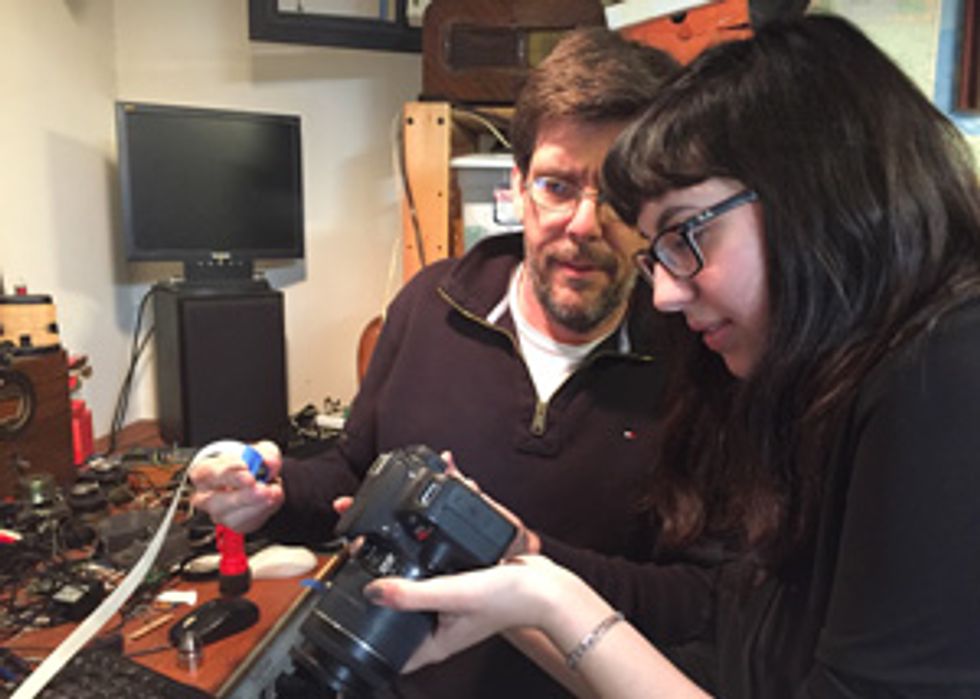My father is an engineer who, as fate would have it, has raised only artists. I am a filmmaker, and he meets me at the intersection of our different passions with at least one email a day containing an article about a camera, a YouTube video, or a new technical discovery. It was among these emails that a conversation about the digital versus analog filmmaking debate mingled with notes about the Raspberry Pi camera module, which allows people to build DIY cameras. This was of particular interest to me because years ago at a garage sale in Kerrville, Texas, an old 8-mm film camera made its way into our lives. I was 14 and I really wanted this camera to work. Alas, it didn’t. So, for the next six years it gathered dust on a bookshelf in our home. But now a theory was born. What if you used the lens of a 1950s 8-mm camera and a Raspberry Pi equipped with an imaging module to create a digital film camera?
My dad was fascinated by the optical attributes of the old lenses, while my goal was to create a video with an unfiltered vintage look. We had noticed that many lenses for old film cameras had been adapted to modern digital technology, but not those for lowly 8-mm cameras, which had been used only by families and fledgling filmmakers. We bought a number of cameras on eBay and tore them apart to get at the lenses. (We didn’t use the original garage-sale camera because we found that the compound lenses used on other cameras served our purposes better.)
Our first problem was that the Pi’s digital camera module (US $25) is essentially a repurposed smartphone camera. Designed for stand-alone use rather than as part of a larger optical system, it has a built-in lens over its imaging sensor that rendered it incompatible with our vintage optics. So we carefully removed this lens from the camera module and manually positioned the module at the focus of an 8-mm lens to get a taste for what the optical arrangement of our retrofitted camera might be. By lucky coincidence, the area of the camera module’s sensor and an 8-mm film frame are nearly a perfect match.
Retrofit

Now came the challenge: How exactly do you retrofit an 8-mm camera with a Raspberry Pi? We wanted the electronics to fit inside the original metal case of the camera that we took the lens from but realized there was a mechanical dilemma right off the bat. To keep captured video in focus as we adjusted the 8-mm lens for different shots, we needed to have a mechanism for adjusting the spacing between the lens and the camera module. This meant the camera module had to be able to move back and forth within the camera’s case. Using a pair of guide rails from an old CD-ROM drive to hold the camera module and an exterior plastic screw to move it back and forth, we fabricated our first prototype, using a simple plywood box in place of the original metal case.
Spurred on, we mounted an 8-inch HDMI screen (US $55) to the case, which allows us to see a live image of what’s being captured by the camera module. We connected this screen to a Raspberry Pi 2 Model B, and then attached a Bell & Howell pistol grip to the base of the case. All of a sudden we had something that looked and functioned like a camera.
We used the standard Raspberry Pi camera utilities, raspistill and raspivid, to control the camera. The first still image arrived with promise. Then a moving image brought us to our feet: It looked just like an old 1950s home movie. We christened our camera the Pi8. Thrilled, we hatched a plan to take a road trip to Austin, Texas, grabbing footage the whole way.
Actually filming from the car involved a lot of cables, a USB battery pack with a 5- to 12-volt converter to power the screen and the Pi separately, and a full-size keyboard. I’d type in commands to start recording into a Raspberry Pi Linux terminal window and then pick up the Pi8 and film while Dad drove and attempted not to run anyone over.
We came back the same day, and by the next morning I had completed editing the film from the Pi8’s maiden voyage. The results indeed had a vintage look. In particular, the edges of the image had the soft focus found in many 8-mm movies. After studying the images, we came to a consensus. The digital camera module was set up to capture and process images from a lens that is very different from an 8-mm lens. It was this “fight” between the camera module and the 8-mm optics that gave the video its unique, artifact-riddled, home-movie look—the very look that film-camera makers, and later on, digital-camera makers, had worked many hours to erase!
For me, the narrative of how the Pi8 came to be from my collaboration with my father was almost as important and interesting as the camera itself. A short film was inevitable. Once it hit YouTube (aptly titled “Hacking an 8-mm With a Raspberry Pi”), it got picked up and started making the rounds on maker sites.
Within hours of the Pi8’s first road test we already had ideas for improvements. We are adding a motorized automated focus and a trigger shooting method so that we can end and begin shots precisely—and without pounding on a keyboard! We currently use the Pi capture software with its default settings, and we’re eager to explore more advanced features. In particular, we hope to use the Python programming language to enable more automated functions. I’m looking forward to all the stories the Pi8 will enable me to tell, and my dad is just glad I finally know what Linux is.
This article appears in the June 2016 print issue as “A Digital Movie Camera With Vintage Lenses.”





